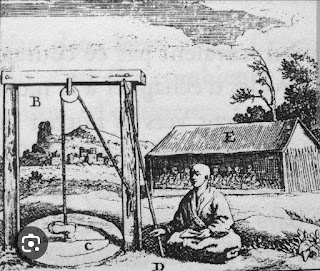Saint Lorenzo Ruiz, a Philipino, Martyred While Being Catholic, In Japan
“I am a Catholic and wholeheartedly do accept death for God; Had I a thousand lives, all these to Him shall I offer.” Saint Lorenzo Ruiz’s -the first Filipino martyr to be canonized by the Roman Catholic Church –
Saint Lorenzo Ruiz, patron saint of Filipino youth, the Philippines, people working overseas, and altar servers was martyred for being a Christian His feast day is September 28.

“I am a Catholic and wholeheartedly do accept death for God;
Had I a thousand lives, all these to Him shall I offer.” Saint Lorenzo Ruiz’s -the first Filipino martyr to be canonized by the Roman Catholic Church – last words as he and his companions were water boarded to entice them to renounce their faith.
Waterboarding is a brutal practice whereby an interrogator straps a prisoner to a board, places a wet rag in his mouth, and by pouring water through the rag induces controlled drowning. It is a paradigmatic torture technique that has long been considered a war crime. ACLU
Yet waterboarding was not enough. Afterwards, Lorenzo was subjected to a form of torture known as tsurushi, or “gallows and pit.” Ana-tsurushi (lit. “hole hanging”), also known simply as tsurushi (lit. “hanging”), was a Japanese torture technique used in the 17th century to coerce Christians (“Kirishitan”) to recant their faith. The victim was hung head-down by the feet.

One of the victim’s hands would be held tight with a rope, but the other would be left free so that he could signal his willingness to recant.
The technique was said to be unbearable for those submitted to it. The body was often lowered into a hole, itself often filled with excrement at the bottom. Typically, a cut would be made in the forehead around their temples in order to let blood pressure decrease in the area around the head.
The objective was to break their resolve to renounce their faith or they would eventually die. Sometimes there was a doctor to resuscitate them only to be tortured again. An estimated 2,000 Christians died as martyrs. Christians were let go after apostatizing, and in this way the Shogunate practically purged Christianity from Japanll0
Lorenzo refused to recant.
According to the record of his death, his last words were, “I am a Catholic and wholeheartedly do accept death for God. Had I a thousand lives, all these to Him I shall offer. Do with me as you please.”
His traveling companions were all killed, steadfast until the end.
The history of the Catholic Church in Japan is anything, if not of perseverance. After St Francis Xavier and his fellow missionaries entered the country in the 1540s, the Church’s efforts were a striking success, bringing in 300,000 converts over the next 60 years.
But local leaders resented these dramatic inroads from abroad, and issued a nationwide ban on Christian missionaries, followed by a ruthless campaign of persecution, forcing the faithful to go underground for centuries. The Tokugawa shoguns eradicated Christianity in Japan via murder, persecution and decrees. In 1638, an estimated 37,000 people, mostly Christians were massacred after the Christian-led Shimabara Rebellion. In 50 years, the crackdown policies of the shoguns reduced the number of Christians to near zero. And as Tertulian prophesied: “We spring up in greater numbers the more we are mown down by you: the blood of the Christians is the seed of a new life. As of 2021, there were approximately 431,100 Catholics in Japan (0.34% of the total population), 6,200 of whom are clerics, religious and seminarians.
During its nearly 500-year presence, however, Japanese Catholicism has produced many heroic figures, including 40 saints and 200 Blesseds
Lorenzo was beatified by Pope John Paul II on February 18, 1981. The beatification ceremony was held in the Philippines making it the first beatification ceremony ever held outside the Vatican.
A miracle attributed to his intercession occurred in 1983. A two-year-old girl, Alegria Policarpio, suffering from hydrocephaly, a condition she had since birth, was miraculously cured.
His canonization took place at the Vatican on October 18, 1987.
Saint Lorenzo Ruiz was born circa 1600 in Binondo, Manila in the Philippines to a Chinese father and a Filipino mother. Both were Christians and took care to raise Lorenzo as a Catholic. He served in his parish church as an altar boy and calligrapher and joined the Dominican Confraternity of the Most Holy Rosary.
Later, he married a woman named Rosario. The happy couple had three children, two sons and one daughter. By all accounts, the family was ordinary and happy.
In 1636, Lorenzo was falsely accused of killing a Spaniard. To protect his family, he fled on board a ship with three Dominican priests and a leper. The ship departed the Philippines on June 10, 1636, bound for Okinawa. When they arrived in Japan, they did so in the middle of an ongoing Christian persecution.
Lorenzo was arrested by Japanese officials for the crime of being a Christian and ordered to recant his faith. When he refused he was imprisoned. On September 27, 1637, Lorenzo and his companions were taken to Nagasaki to be tortured and killed if they would not recant their faith and eventually martyred.
Saint Lorenzo, pray that we may persevere in our faith.




